From lambs and chicks to the vibrant splashes of color about to explode in our more than 30 historic gardens—spring is on its way to Williamsburg! Many would argue the true magnitude of beauty can only be experienced in person but we’re going to try our best to illustrate this season of new beginnings through beautiful images and some of your shared memories.
Our horticulturists collaborate with our researchers to present an abundance of flowers, herbs, and trees that are historically accurate to the 18th-century. The seasonal flower beds are designed to be complementary to the existing landscape and architecture. With almost 90 acres to cover, which spots are must-sees? I posed that very question to our blog readers as well as fellow co-workers across the foundation. The emails and pictures started flooding my inbox. Here are those that made our Top 10 list—along with a little history for good measure.
Remember, you’ll need a Colonial Williamsburg admission ticket to explore the majority of these gardens. To help plan your route, here is a downloadable map which is also available in our Colonial Nursery and Visitor Center. It’s where we found all of the details about the gardens, to share with you!
#1 Governor’s Palace
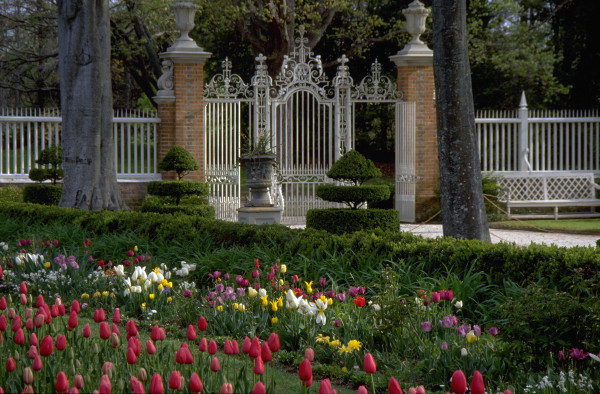 Robin Kipps from the Apothecary says this is “definitely” on her Top 10 list. Many of you said the same. Styled after nothing less than the gardens of Hampton Court, these 10 acres behind the palace resemble English estates during the reign of King William III and Queen Mary II. Three original features from the 18th century remain: the ice mount, the falling gardens (terraces), and the canal. You can literally get lost in the beauty once you step into the ballroom garden!
Robin Kipps from the Apothecary says this is “definitely” on her Top 10 list. Many of you said the same. Styled after nothing less than the gardens of Hampton Court, these 10 acres behind the palace resemble English estates during the reign of King William III and Queen Mary II. Three original features from the 18th century remain: the ice mount, the falling gardens (terraces), and the canal. You can literally get lost in the beauty once you step into the ballroom garden!
#2 Orlando Jones House
 This garden is a close second to the Palace when it comes to recommendations from Colonial Williamsburg employees. Located next to the Armoury, the garden is based on the 1745 advertisement from the Virginia Gazette that indicates the existence of one at the time. Landscape Architect Arthur A. Shurcliff designed the garden in 1939 and it has remained almost unchanged since that time. In the spring, you’ll usually find white tulips blooming. Master Blacksmith Ken Schwarz describes it as “an elegant and under-appreciated spot that offers a bit of quiet solitude in the middle of a bustling town.”
This garden is a close second to the Palace when it comes to recommendations from Colonial Williamsburg employees. Located next to the Armoury, the garden is based on the 1745 advertisement from the Virginia Gazette that indicates the existence of one at the time. Landscape Architect Arthur A. Shurcliff designed the garden in 1939 and it has remained almost unchanged since that time. In the spring, you’ll usually find white tulips blooming. Master Blacksmith Ken Schwarz describes it as “an elegant and under-appreciated spot that offers a bit of quiet solitude in the middle of a bustling town.”
#3 Taliaferro-Cole House
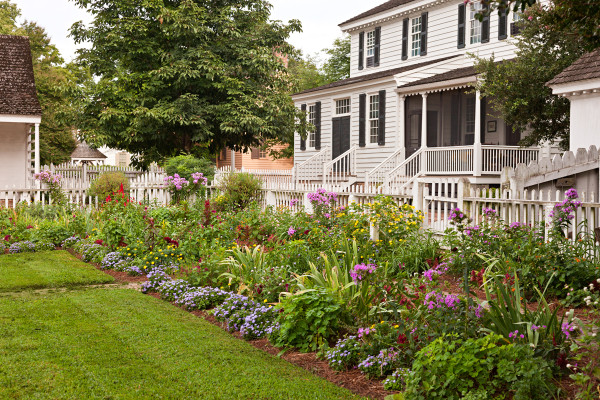 Kristy Engel from the basketmaker says this is her absolute favorite! She isn’t alone. It’s located behind the Weaver and we confirmed—it’s by far one of our most photographed gardens. Thomas Crease, a professional gardener in 18th-century Williamsburg lived on this site for a total of 35 years and the topography is largely unchanged from his time there. The garden consists of three separate rectangular areas enclosed by fencing, each planted for a different purpose.
Kristy Engel from the basketmaker says this is her absolute favorite! She isn’t alone. It’s located behind the Weaver and we confirmed—it’s by far one of our most photographed gardens. Thomas Crease, a professional gardener in 18th-century Williamsburg lived on this site for a total of 35 years and the topography is largely unchanged from his time there. The garden consists of three separate rectangular areas enclosed by fencing, each planted for a different purpose.
#4 Custis Tenement House
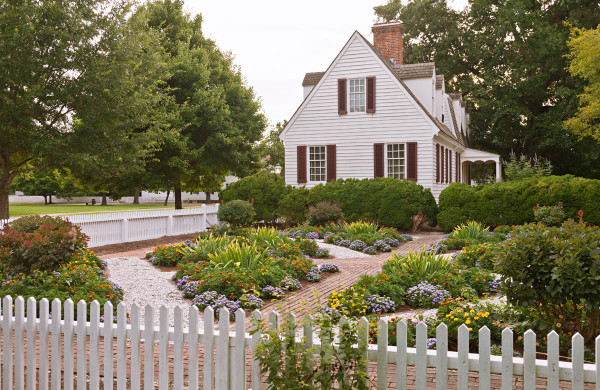 This is supervisor of stables Karen Smith’s favorite spot. She and her horse John are pictured at the top in the sea of colorful foxgloves. You’ll find this impressive garden just past the Colonial Nursery (on the same side of DoG Street). Because of the scarcity of archaeological evidence of a colonial-period garden on this site, landscape architect Arthur A. Shurcliff again turned to Claude Joseph Sauthier’s 18th-century maps for a pattern and style for the present garden. The parterre garden features formal paths made of crushed shell and brick.
This is supervisor of stables Karen Smith’s favorite spot. She and her horse John are pictured at the top in the sea of colorful foxgloves. You’ll find this impressive garden just past the Colonial Nursery (on the same side of DoG Street). Because of the scarcity of archaeological evidence of a colonial-period garden on this site, landscape architect Arthur A. Shurcliff again turned to Claude Joseph Sauthier’s 18th-century maps for a pattern and style for the present garden. The parterre garden features formal paths made of crushed shell and brick.
#5 The Colonial Garden & Nursery
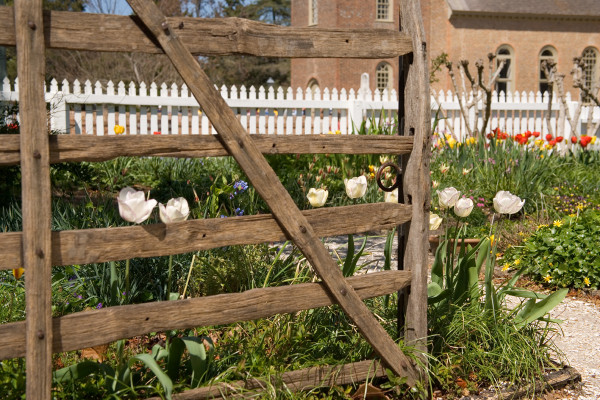
This garden is across from Bruton Parish Church and displays many rare and unusual varieties of heirloom roses and fruits. An inside source tells us to also expect plenty of rare tulips this year! This garden plot features examples of culinary, medicinal, and household herbs used by colonists in the 1700s. Interpreter Amanda Doggett says of our Historic Gardeners, “Watching Wesley, Jen, Emily, and Chip transform that little patch of Earth never ceases to amaze me.”
#6 Alexander Craig House
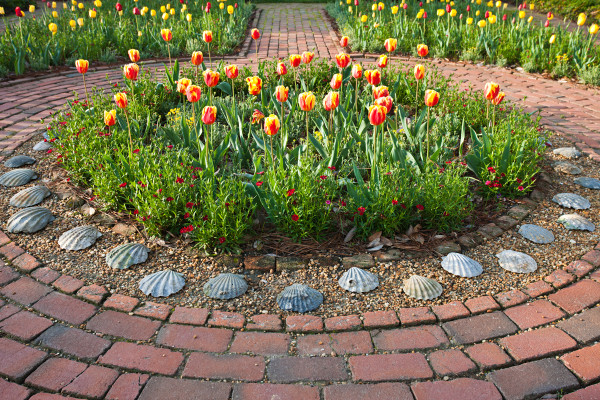
Gardens and outbuildings were mentioned in recorded deeds for this original house located next to Raleigh Tavern. Today, the pleasure garden with seasonal color provides an attractive foreground to the orchard’s fruit trees, pleached arbors, and the original brickbat paths.
#7 George Wythe House
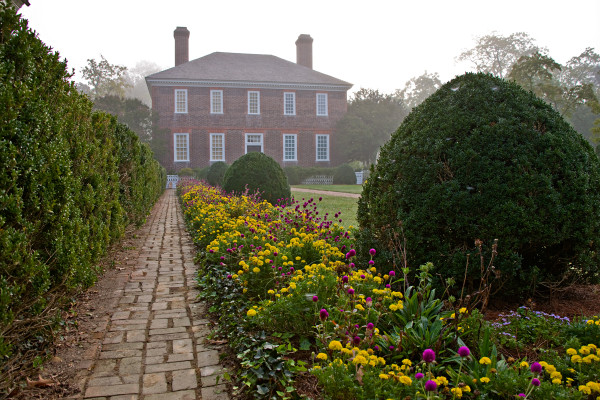
Facing the Palace, this original house and its garden will be on the left side of the Palace Green. Surviving letters reveal Wythe was interested in fruit culture, although his wife was in charge of the kitchen garden. Today a kitchen garden, orchard, and service yard flank each side of the pleasure garden.
#8 Christiana Campbell’s Tavern
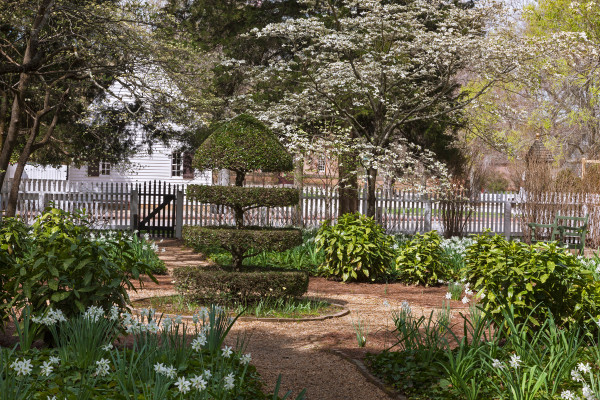 Arthur A. Shurcliff’s successor, Alden Hopkins, designed a beautiful pleasure garden beside the tavern. Its geometric pattern features nine planting beds with a tiered yaupon holly topiary in the central circle. Here you’ll find flowering dogwoods, oak leaf hydrangeas, Eastern red cedars, and an array of heirloom daffodils (one of my personal favorites).
Arthur A. Shurcliff’s successor, Alden Hopkins, designed a beautiful pleasure garden beside the tavern. Its geometric pattern features nine planting beds with a tiered yaupon holly topiary in the central circle. Here you’ll find flowering dogwoods, oak leaf hydrangeas, Eastern red cedars, and an array of heirloom daffodils (one of my personal favorites).
#9 Bassett Hall
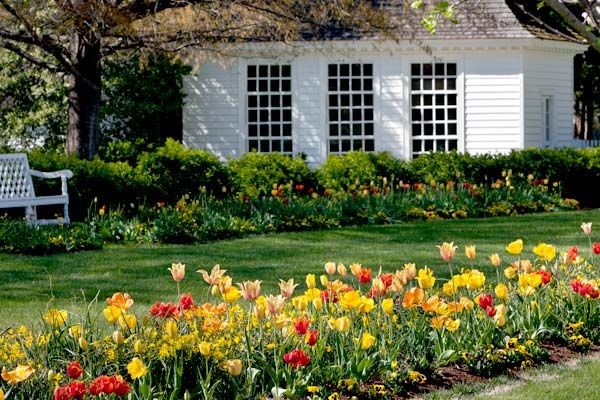 This 18th-century house served as the Williamsburg home of Mr. and Mrs. John D. Rockefeller Jr. during the early years of the restoration of Colonial Williamsburg. It’s a little off the beaten path—on the right side of Francis Street—past the Williamsburg Inn. The entrance is diagonal from Waller Street. As part of recent renovations, the gardens have been re-created as they appeared in the 1940s. Spring blooming bulbs are followed by seasonal annuals.
This 18th-century house served as the Williamsburg home of Mr. and Mrs. John D. Rockefeller Jr. during the early years of the restoration of Colonial Williamsburg. It’s a little off the beaten path—on the right side of Francis Street—past the Williamsburg Inn. The entrance is diagonal from Waller Street. As part of recent renovations, the gardens have been re-created as they appeared in the 1940s. Spring blooming bulbs are followed by seasonal annuals.
#10 Coke-Garrett House
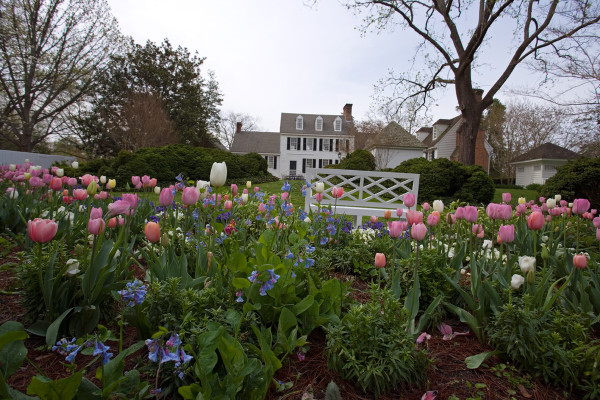
This is another garden a little off the beaten path. It’s around the corner of Nicholson and Waller Streets. The Coke-Garrett House was described in the 18th century as a “long frame house” with “beautiful gardens surround[ing] the estate.” Today, stately evergreens, nut trees, and old boxwood enclose the area behind the house and lead down a grassy ramp to a flower border on the lower garden level.
Now the big question: When will all these flowers bloom? Manager of Landscape Services Laura Viancour tells us the first and second week in April should be best for bulbs like our tulips. May and June would be the time to see our perennials and flowering trees. We’ve included a more detailed list below.
APRIL: violets, tulips, daffodils, dogwoods, shadbushes, crab apples, roses, lilacs, and peonies
MAY: hydrangeas, irises, oriental poppies, peonies, dogwoods, and red buckeyes
JUNE: American Wisterias, pomegranates, magnolias, daylilies, garden phloxes, and Stokes’ asters

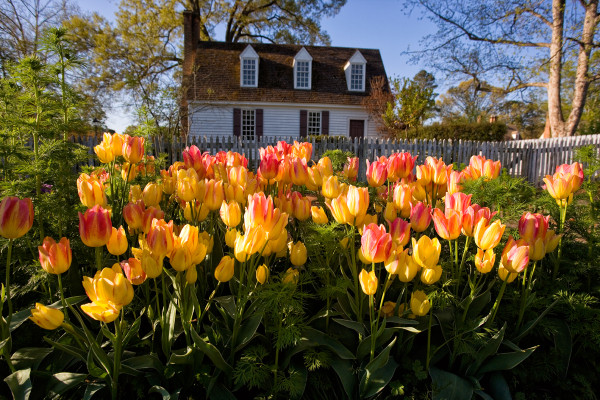
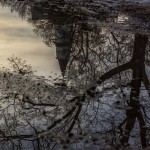
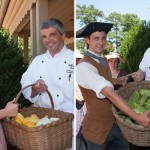
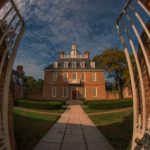
Great stuff!! Looking forward to new posts.